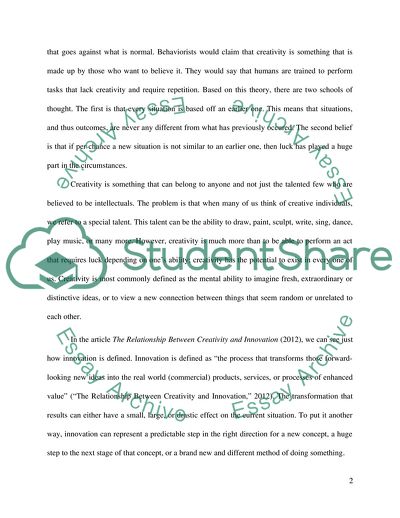Cite this document
(The Creativity Essay Example | Topics and Well Written Essays - 1250 words, n.d.)
The Creativity Essay Example | Topics and Well Written Essays - 1250 words. https://studentshare.org/information-technology/1779575-indivual-essay
The Creativity Essay Example | Topics and Well Written Essays - 1250 words. https://studentshare.org/information-technology/1779575-indivual-essay
(The Creativity Essay Example | Topics and Well Written Essays - 1250 Words)
The Creativity Essay Example | Topics and Well Written Essays - 1250 Words. https://studentshare.org/information-technology/1779575-indivual-essay.
The Creativity Essay Example | Topics and Well Written Essays - 1250 Words. https://studentshare.org/information-technology/1779575-indivual-essay.
“The Creativity Essay Example | Topics and Well Written Essays - 1250 Words”. https://studentshare.org/information-technology/1779575-indivual-essay.


